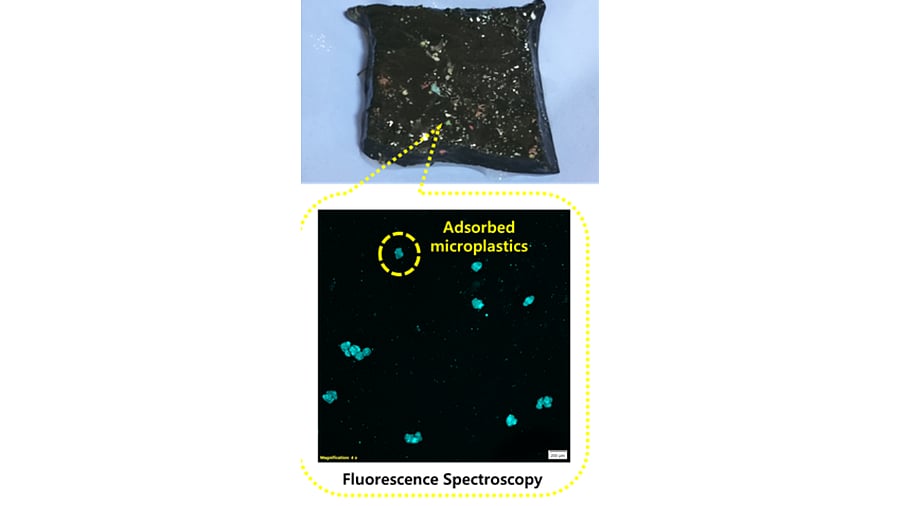
Microplastic
Credit: Special Arrangement
Bengaluru: In a boost to efforts in combating the threat posed by microplastics, researchers at the Indian Institute of Science (IISc) have designed a sustainable hydrogel to remove these pollutants from water.
Microplastics – tiny plastic debris that can enter our bodies through the water we drink and expose us to illnesses – have also been marked for their adverse impact on the environment.
Filtering membranes have had limited results because the membranes can become clogged with these tiny particles, rendering them unsustainable. An IISc team led by Suryasarathi Bose, Professor at the Department of Materials Engineering, turned to 3D hydrogels for a solution. The material has an intertwined polymer network that can bind the contaminants and degrade them using UV light irradiation, IISc said.
The novel hydrogel consists of three different polymer layers – chitosan, polyvinyl alcohol, and polyaniline – intertwined together, making an Interpenetrating Polymer Network architecture. “The team infused this matrix with nanoclusters of a material called copper substitute polyoxometalate (Cu-POM). These nanoclusters are catalysts that can use UV light to degrade the microplastics,” IISc said.
The team crushed food container lids and other daily-use plastic products to create two of the most common microplastics: polyvinyl chloride and polypropylene. The hydrogel could remove about 95 per cent and 93 per cent of the two different types of microplastics in water at near-neutral pH (∼6.5). Tests also validated the material’s durability.
“Along with treatment or removal of microplastics, another major problem is detection. Because these are very small particles, you cannot see them with the naked eye,” Soumi Dutta, first author of the study published in Nanoscale, and SERB National Post-doctoral fellow at the Department of Materials Engineering, said.
To solve this problem, the team added a fluorescent dye to the microplastics to track how much was being adsorbed and degraded by the hydrogel under different conditions.
The hydrogel could last for up to five cycles of microplastic removal without significant loss of efficacy. Bose noted that once it outlived its use, the hydrogel could be repurposed into carbon nanomaterials for removing heavy metals like hexavalent chromium from polluted water.
The researchers plan to work with collaborators to develop a device that can help clean up microplastics from various water sources on a large scale.